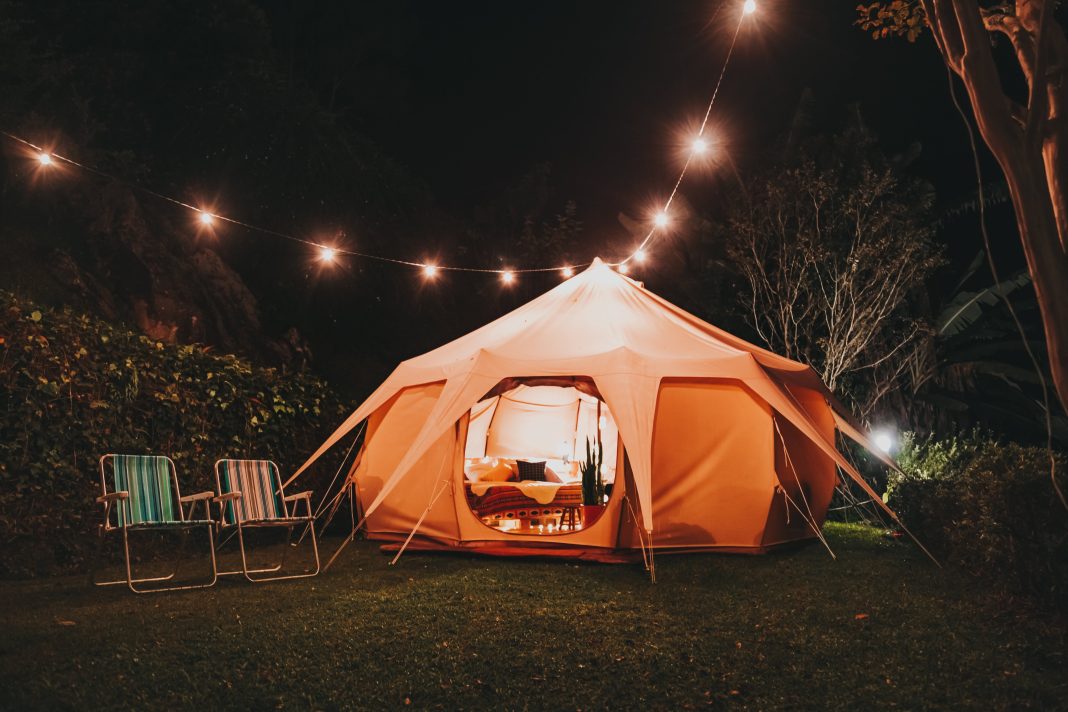Camping is a fantastic activity for weekends and vacations. Your family gets to spend some time enjoying the outdoors. Camping can also promote bonding. You don’t have to head out on ambitious expeditions into the wilderness to have a great time, though. There’s plenty of fun and adventure to be found by camping in your own backyard.
Getting the most out of these experiences takes a little planning. There are certainly some safety elements you’ll need to take care of, alongside gathering components to make it a practical and fun activity. So, let’s run through some of the essential things to consider when creating a truly memorable backyard camping adventure for your family.
Back camping safety check
Naturally, your kids’ safety comes first in any scenario. Before getting out of the tents and roasting marshmallows, your first step should be to do a safety check. Your home is already likely a secure spot for your kids, but some camp-specific vigilance can help you avoid any unforeseen accidents.
Identify and address new hazards
Perform a once-over of your yard space to identify any potential hazards you must address before setting up. This might involve repairing any broken structures in your yard — such as trellises, fences, or furniture — that your kids may get injured on. You should also inspect your intended camping area for unexpected debris, such as glass, broken toys, and rocks that may lead to injuries.
Most often though, new hazards may come in the form of storms or inclement weather. During camping season, though, you should keep an eye out for thunderstorms and tornadoes. These storms can sometimes appear out of nowhere, so always prepare for anything. You can do this by keeping an emergency or first aid kit on hand and watching your local weather report the night before and the day of your backyard camping trip.
Childproof the area
Childproofing your outdoor spaces is vital for minimizing incidents while your kids are having fun. Ensure not just that you have a good fence around your perimeter but also that the gate has a sturdy lock. This prevents them from wandering off during the night. Lawnmowers and other mechanical items need to be safely stored away, too. If you’re using your garage as part of your camping area, perhaps as an additional shelter or activity area if it rains, make certain that chemicals and tools are either out of reach or in locked cabinets. Perhaps you have a pool. In this case, be sure it is covered and any alarms are activated.
Plan the perfect setup
Sure, throwing a few tents into the backyard can be fun. Nevertheless, taking a little extra time to plan the setup and layout of your camping space can give you more control over the experience. Not to mention it means you don’t overlook anything important.
Tents
Think about how many tents you want in the backyard. Having a separate tent for everyone can be a more exciting and personalized adventure. Though — especially for younger kids — sharing a larger tent can give you all a cozier experience. If you go for the multi-tent option, consider how you want to lay out the tents. Perhaps have all doors facing one another so you can sit inside them and still chat before sleeping.
Fire pit
A campfire is one of the mainstays of an overnight camping adventure. It keeps everyone warm, you can make s’mores, and it creates a great atmosphere for telling spooky stories. When backyard camping, putting together a fire pit makes a good communal space and it keeps the fire itself contained. You could dig a pit and stack bricks around it, or opt for a temporary metal pit you can store in your garage when not in use. In either case, make certain you check your local laws on fire pits, as many will require them to be a certain distance away from buildings and combustible materials.
Keep Your kids involved
Sleeping under the stars doesn’t have to be the beginning and end of the adventure for your kids. Involving them in planning and setup can also be fun and rewarding. It gives them a sense of responsibility and helps them feel more connected to the experience.
Planning activities
Encourage your kids to help plan the camping activities, rather than just telling them what you’ll be doing. Discuss a range of options — from stargazing to a small scavenger hunt. Get them to choose some of the songs to sing around the campfire. Do this at least a few days before your adventure. It both gives you time to get any extra materials and builds the excitement for your kids around the adventure they’re about to embark on.
Making camp
Setting up camp is fun and involves some practical skills. Get your kids involved with setting everything up in a way that’s appropriate to their age and ability levels. This could involve guiding them through the intricacies of attaching the tent canvas to its poles and securing it to the ground. It might be putting up some hammocks between trees safely. Teaching them how to build, light, and monitor a campfire safely gives them a sense of personal responsibility and can build their confidence. You could even make this an introductory camp skills session before you take them out to spend the weekend in local parks and wilderness areas.
With a little planning, you can design a memorable and enriching backyard camping experience. Make solid safety and setup choices, alongside ensuring your kids feel connected to the process. Remember, though, that these are just the basics. You should look for ways to tailor backyard camping to your family’s specific needs. For instance, if you live in the city, perhaps decorate your space to make it feel more like a natural environment. Look at what little touches you can add to give your adventure a unique flavor that might even become a family tradition.





















